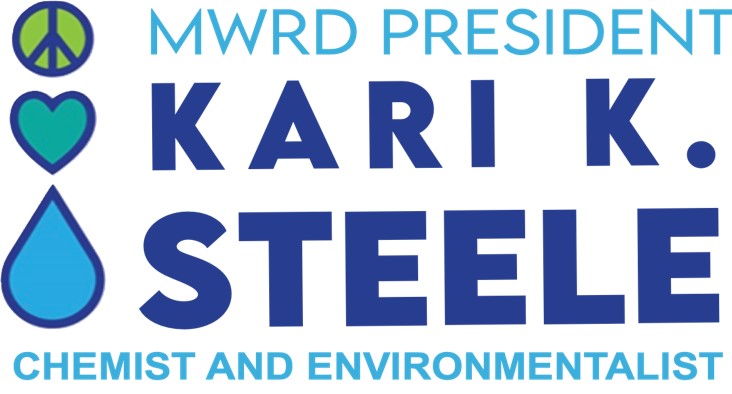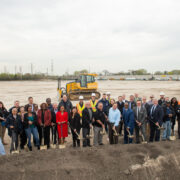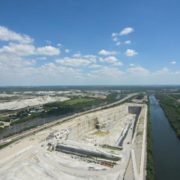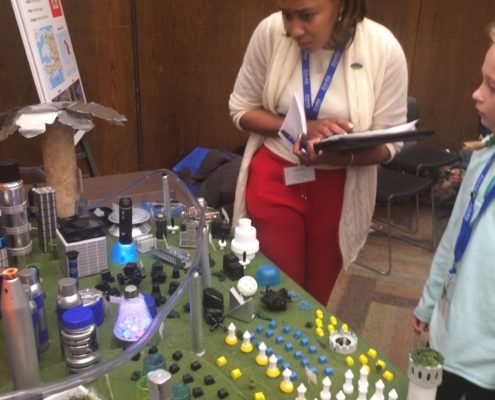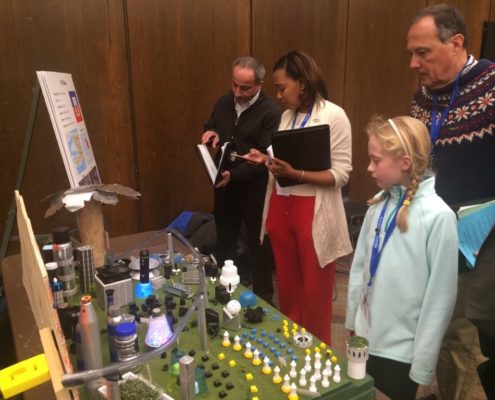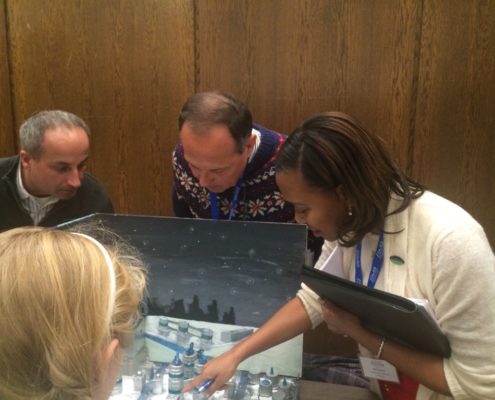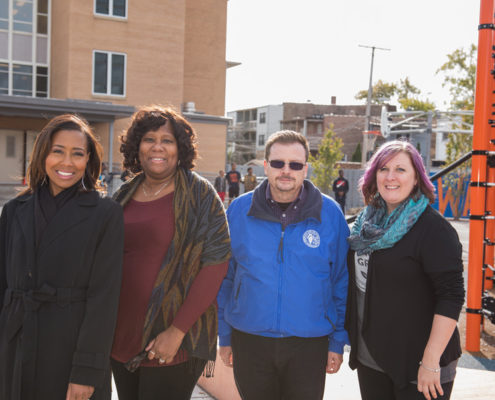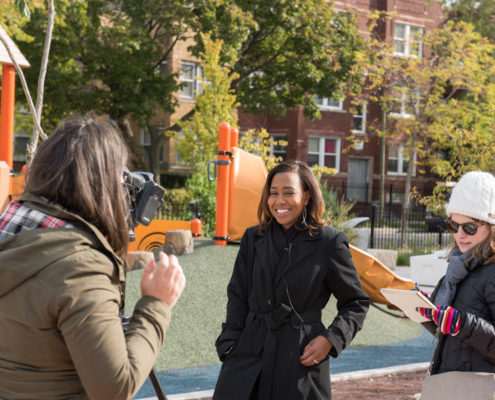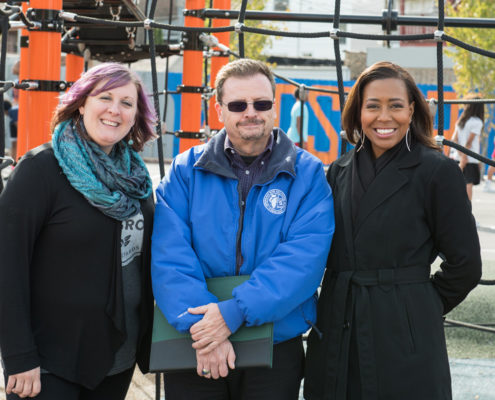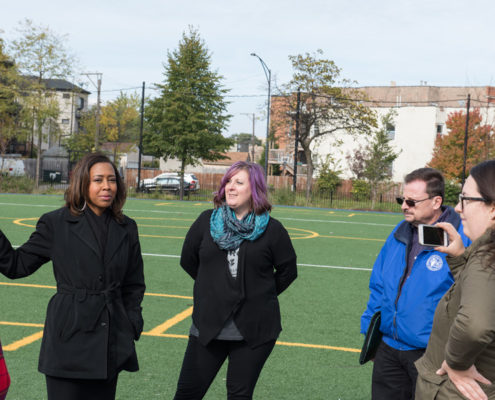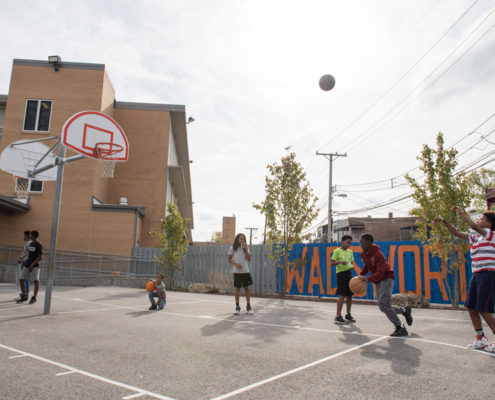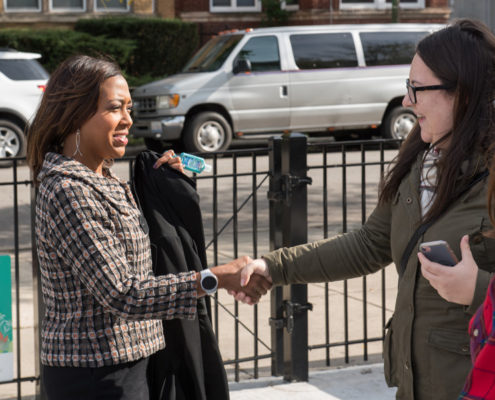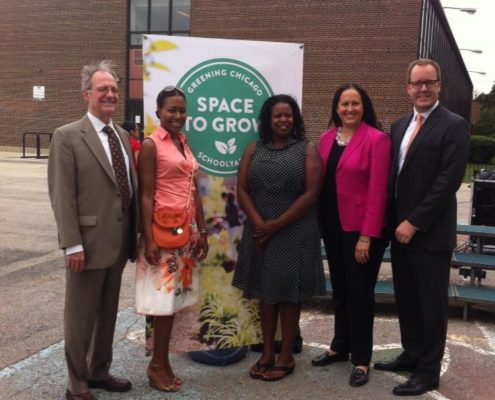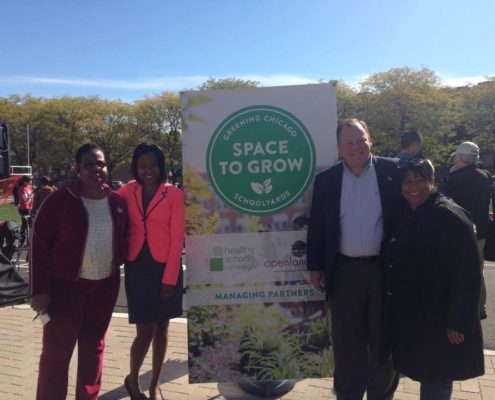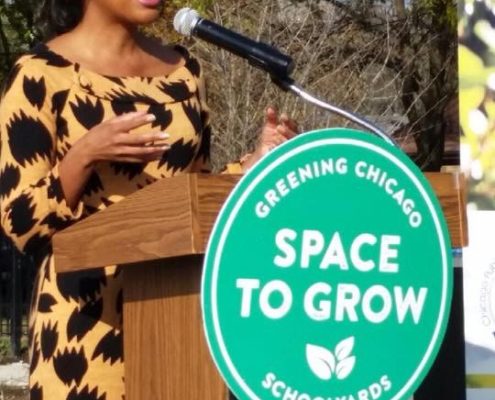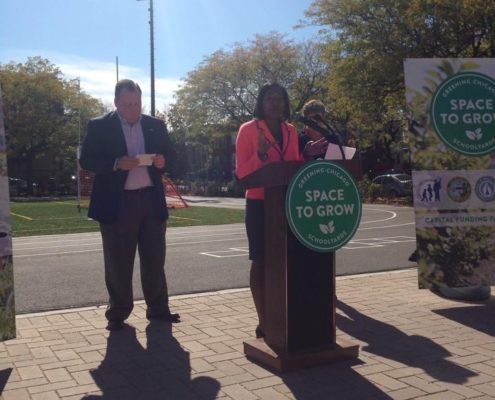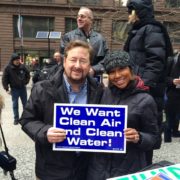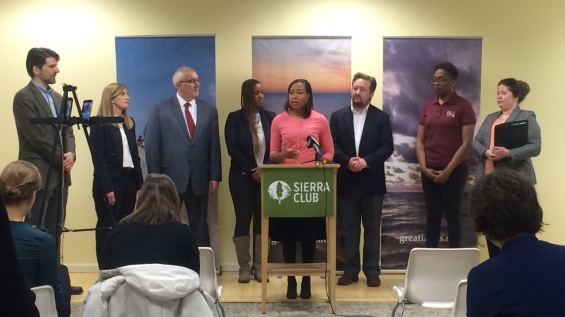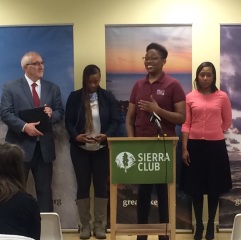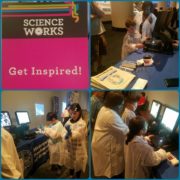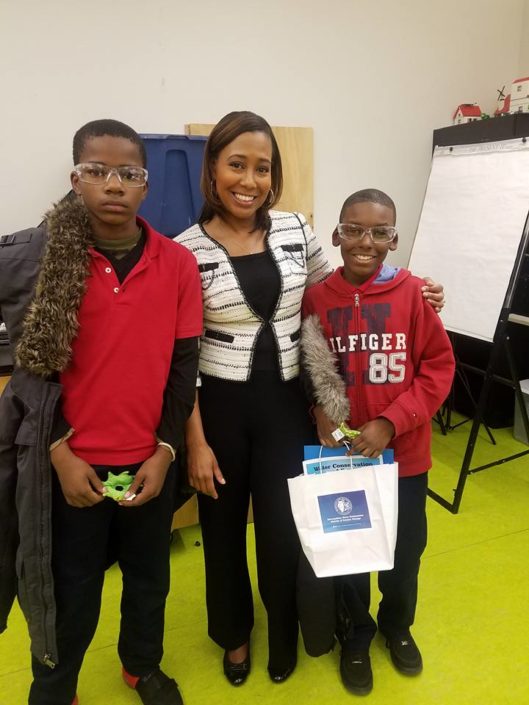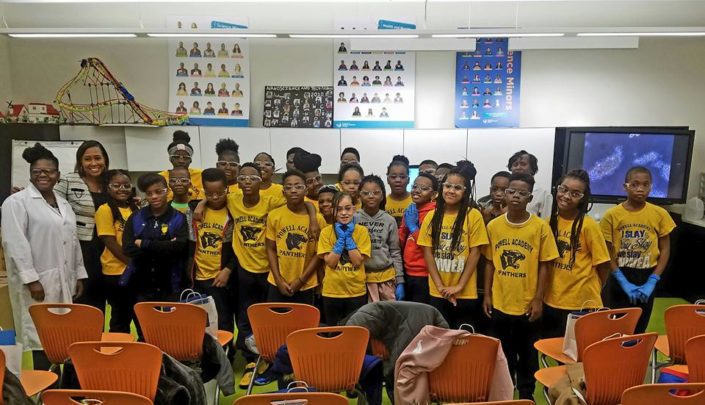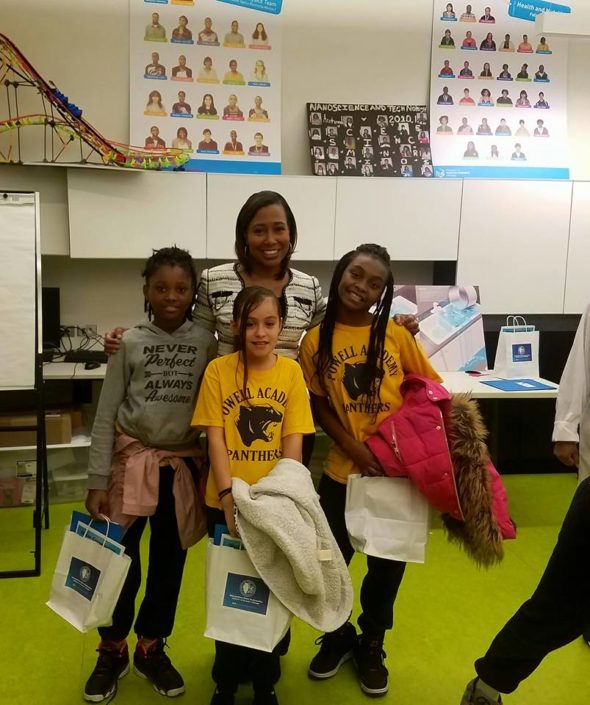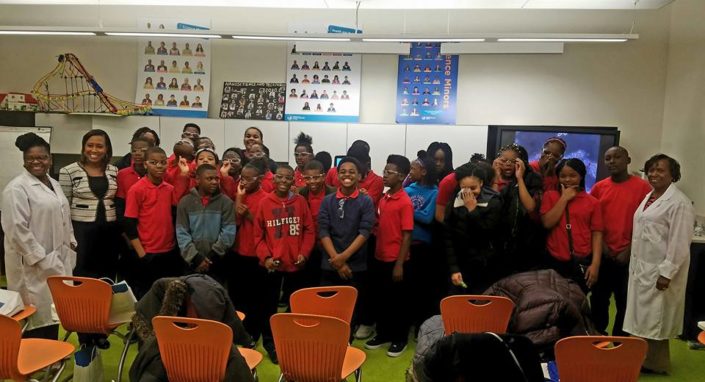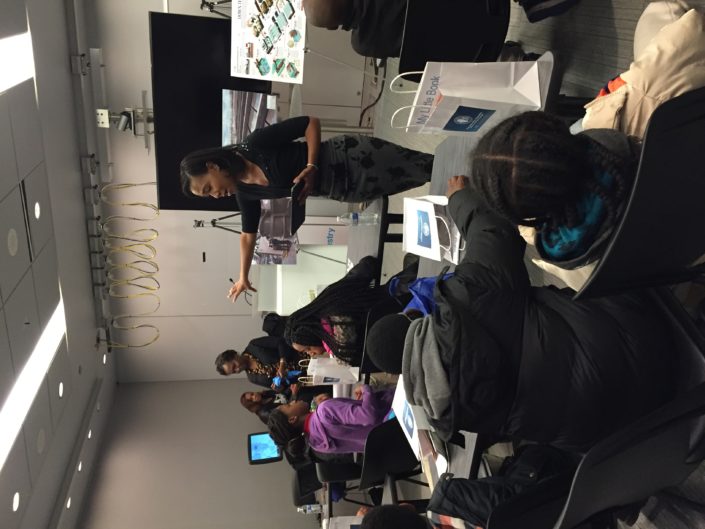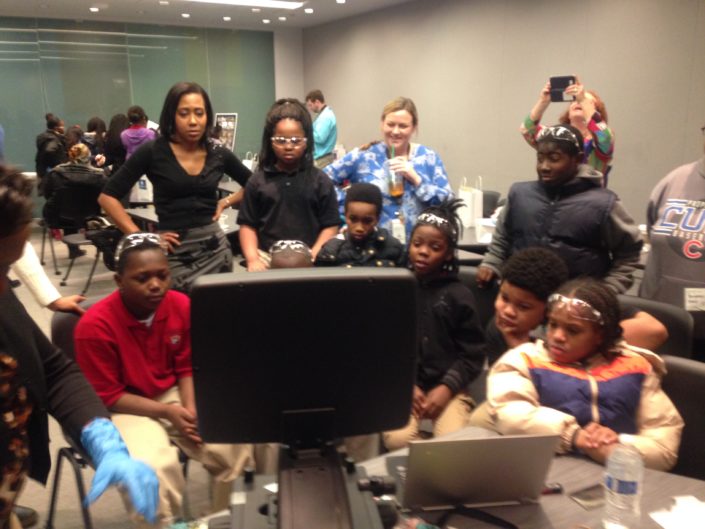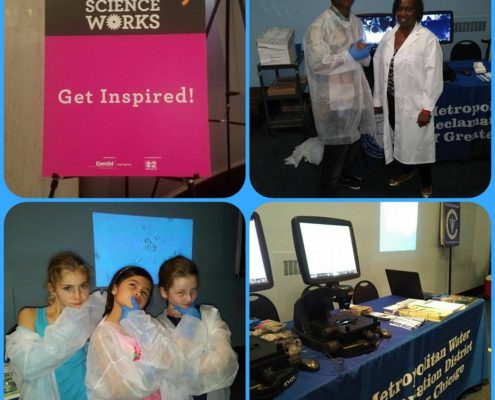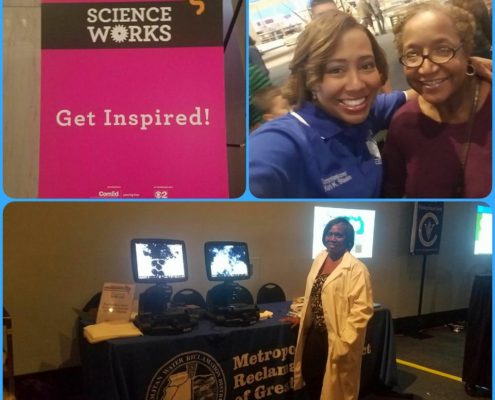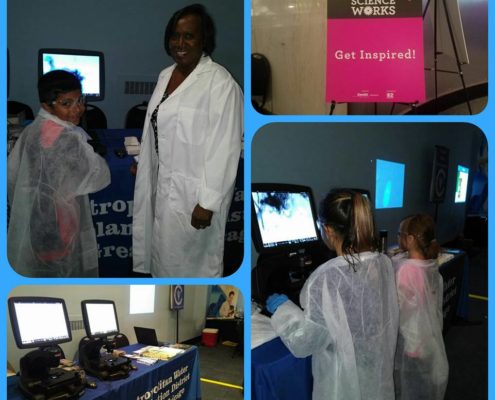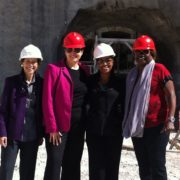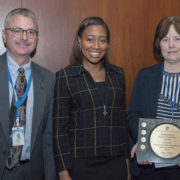Ribbon cutting at MWRD’s Addison Creek Reservoir marks milestone in flood relief and kick off to next phase of work
2,200 properties protected in six towns, 1,700 removed from flood plain
The first of two major stormwater management projects were formally placed into service to protect six communities from flooding as the Metropolitan Water Reclamation District of Greater Chicago (MWRD) and its partners unveiled the new Addison Creek Reservoir and kicked off another project to im-prove the Addison Creek Channel.
The MWRD and partners cut the ribbon on the first of two major projects that will provide flood relief benefits for communities along Addison Creek, including Bellwood, Northlake, Stone Park, Melrose Park, Westchester and Broad- view. The 600-acre-foot Addison Creek Reservoir in Bellwood will hold 195 million gallons of storage capacity and connect with the Addison Creek Channel, where additional improve- ments will reduce overbank flooding to approximately 2,200 structures, including an estimated 1,700 structures that will be removed from the flood plain. To watch the ribbon cutting ceremony, visit the MWRD’s YouTube channel at youtu.be/RCeI-8FdAM7c.
“This is a great day,” said MWRD President Kari K. Steele.“Thanks to the continued collaboration between the MWRD, six communities, and multiple funding partners, we are stand-ing above a future reservoir that will capture excess stormwater and mitigate flooding for our partners in these municipalities. This investment leads to improved local quality of life and fosters new peace of mind the next time it rains.”
The $81 million reservoir at 2795 Washington Blvd. in Bellwood will provide $116 million in flood benefits. Construction includes a control structure, inlet structure, spillway and pumping station. This project is partially funded through $5 million in Community Development Block Grant – Disaster Recovery Program (CDBG-DR) funds from the U.S. Department of Housing and Urban Development (HUD) and Cook County.
“I am truly honored to be here for the culmination of one project and the start of another. There is nothing better than being in my hometown in Bellwood where we have been talking about flooding since I was a little kid,” said Illinois House Speaker Emanuel “Chris” Welch (7th Dist.). “I am so proud of the commissioners at the MWRD for listening and acting. This reservoir will ensure that our communities are safe and help mitigate the risk of floods; it will also help erosion and benefit our local ecosystems, which means we are doing our part to also take care of the planet. These projects will help replenish ground water, create habitats for wildlife, improve agricultural productivity and improve water quality.” The $77 million channel improvements project will take place over a three-mile stretch of the creek. The MWRD will lower, widen and stabilize the existing Addison Creek Channel to allow for a higher flow of water to pass through during a flooding event, and protect neighboring residents (
MWRD commissioners, state and federal leaders, project supporters and local mayors formally unveiled the new Addison Creek Reservoir to take on overbank flooding from the connecting Addison Creek Channel. Ribbon cutting at MWRD’s Addison Creek Reservoir marks milestone, cont. and businesses. Improvements include a mix of natural deign, gabion baskets, soldier pile walls, concrete, riprap, articulated concrete blocks, vegetation clearing and removal of three bridges. The Channel Improvement project received a $9.9 million grant from the Federal Emergency Management Agency (FEMA) Hazard Mitigation Grant Program (HMGP) through the Illinois Emergency Management Agency and Office of Homeland Security.
“This project is a prominent example of breaking the cycle of disaster damage, and FEMA is proud to support this important work,” said FEMA Region 5 Regional Administrator Tom Sivak. “FEMA has been prioritizing the movement of unprecedented amounts of mitigation funding into the hands of communities and local partners, like MWRD, who are acting on their commitment to make this nation safer for future generations.” HMGP provides funding to state, tribal, territorial, and local governments to implement long-term hazard mitigation measures following a presidentially declared disaster. “The outstanding partnerships with FEMA through HMGP funding will help reduce the flood hazards in the Addison Creek Watershed and keep everyone safe,” said Illinois Emergency Management Agency and Office of Homeland Security Director Alicia Tate-Nadeau. “This program will strengthen Addison Creek and greatly reduce the flood dangers and haz-
ards in the six communities in Cook County Illinois.”
In addition to providing flood control benefits, the reservoir will serve as compensatory storage for the channel improvement project. The MWRD will operate and maintain the control and inlet structures, spillway, piping and pump station, while Bellwood will maintain the grounds including landscaping, fencing, and access roadways. The MWRD first identified the Addison Creek stormwater management projects in 2011 in the agency’s Lower DesPlaines River Detailed Watershed Plan, which sought solutions to regional flooding issues.
“Thank you to the Metropolitan Water Reclamation District of Greater Chicago for their work and commitment to Bellwood,
Broadview, Melrose Park, North Lake, Stone Park, Westchester and Proviso Township homeowners,” said Senate Majority Leader Kimberly A. Lightford (4th Dist.), who initially passed a measure in Springfield that established the Addison Creek Restoration Committee to provide $400,000 in funding for environmental work, engineering, planning and community outreach. “I am grateful to see this project come to fruition. It reminds us that when we come together as a team, through federal, state, county, local and city governments, we can deliver major projects like the Addison Creek Reservoir and Channel Improvements for our communities.”
The reservoir and channel improvements have created hundreds of construction jobs and operate in compliance with the MWRD’s Affirmative Action Ordinance, ensuring representation of minority business enterprises (MBEs), women business enterprises (WBEs) and small business enterprises (SBEs). The projects also call for a multi-project labor agreement (MPLA) that provides working opportunities for carpenters, iron work ers, laborers, operating engineers, electricians, and truck drivers. The two projects will improve quality of life further by enhancing green space, including new walking paths and other recreation improvements the MWRD is coordinating with the local communities.
“Congratulations to our engineers, partners and contractors for reaching this stage,” said MWRD Commissioner Daniel Pogorzelski. “It has taken major efforts to remediate the site, relocate utilities,excavate the reservoir, work through a pandemic and tunnel below the railroad tracks and channel to complete this project. Now we look forward to breaking ground on the Addison Creek Channel improvements to provide more protection against flooding.”
Construction on the Addison Creek Channel is expected to be completed by 2026. Full flood reduction benefits will be fully achieved when both projects are completed. When the channel improvements project is completed, the MWRD will submit a Letter of Map Revision (LOMR) to the Federal Emergency Management Agency. Upon approval of the LOMR, some property owners may be eligible to obtain lower cost premiums on their flood insurance policies.

